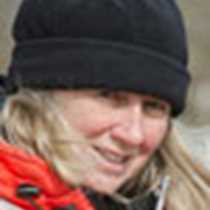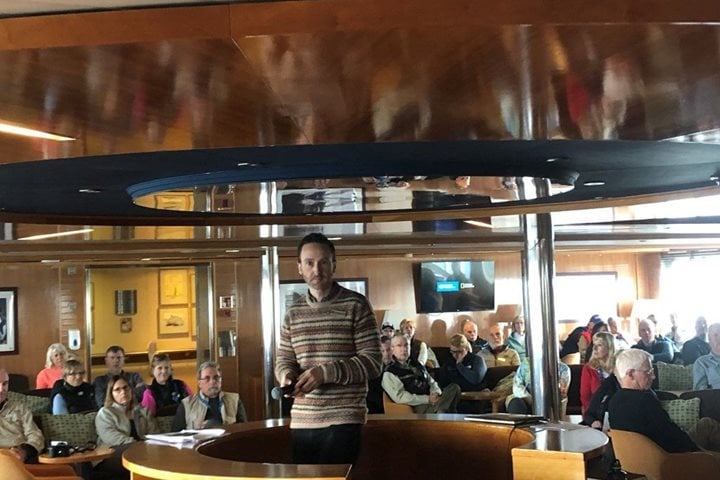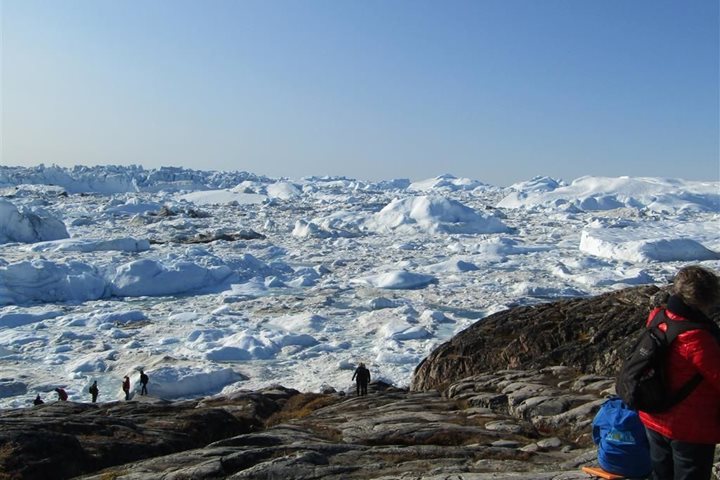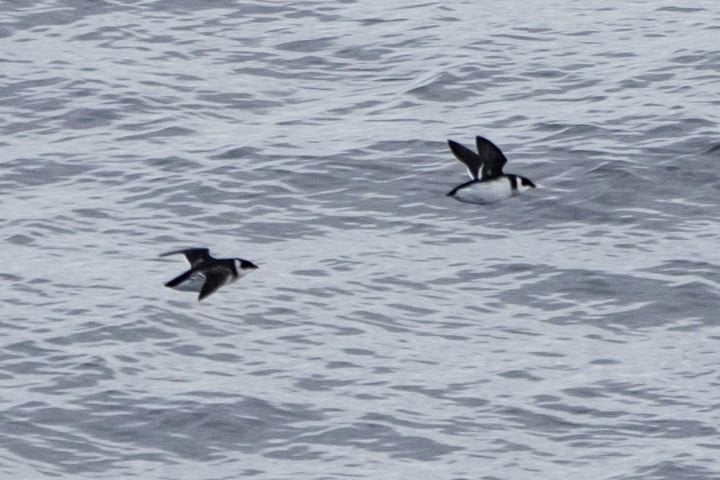One wonders what drew people to these shores 800 or so years ago. The original people are gone—as are the more recent inhabitants. Their presence here is known only from their mark upon the land, and even that is slowly fading into the sea.
At first glance, Devon Island looks barren and desolate. It may be so in some places but not where we set foot upon the land today. Squeezed between Dundas Harbour and Johnson Bay, a narrow peninsula hosts an abundance of history. Details emerged little by little. Red-throated loons called from a freshwater lake as they drifted upon reflections of mountaintops. We walked in a willow forest half an inch tall, the “trees” here dwarfed by poppies and saxifrage. The brilliant white pelage of an Arctic hare betrayed its presence as it stood guard over an ancient archaeological site. We pondered the remains of circular Thule houses and mourned the details we may never know as one by one they are snatched by the sea.
A fairyland of sparkling crystalline shapes decorated the shores of Johnson Bay distracting us from the crumbling remains of a former Royal Canadian Mounted Police and Hudson Bay post.
Not far to the west is Croker Bay. At its head, two glaciers flow—one steep-faced, the other a gentle slope. Icebergs and bergy-bits drift silently toward the sea. An elderly polar bear, sadly nearing the end of its life, stood near the shore and served to remind us of the cycle of life. A younger, healthy bear bedded down nearby in a carpet of vegetation, patiently waiting for summer to end and for fat seals to return to the bay. Out in Lancaster Sound, a chubby fellow rested his head upon a snowy pillow amid the floes of the gateway to the Northwest Passage.







